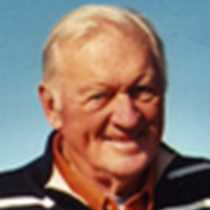Sitka, Alaska
En route to the Russian America site at Sitka, guests boarded Zodiacs about 8:20 am in glass-like Krestof Sound to explore surrounding beaches and forests. This tranquil site is virtually under the shadow of 3,201 foot Mt. Edgecumbe, named by Capt. James Cook in 1778 (earlier Spanish explorers called it “Montana de San Jacinto”). After re-boarding the Sea Lion, the cruise continued to the Tlingit-named “Shee-Atika” (By the Sea), now known as the harbor and town of Sitka.
Before beginning a Sitka land tour, guests joined historian Junius Rochester in the Lounge for a briefing on Russian America – from Peter the Great to Russia’s 1867 “sale” of Alaska to the United States. In addition to the general city tour, Junius recommended that guests visit the Bishop’s House, one of two original Russian buildings (the other at Kodiak) in Alaska, and “Baranof’s Castle Hill,” site of an ancient Tlingit village, later headquarters of the Russian America Company. In 1867, Russian and the United States representatives, including U.S. Secretary of State William Seward, signed papers on this hill transferring Alaska to the United States, the largest North American real estate deal since the 1803 Louisiana Purchase.
After lunch a narrated motorcoach ride passed through the center of town, with “Baranof’s Castle Hill” on the right, the imposing Alaska Pioneer Home on the left, and Saint Michael’s Russian Orthodox Cathedral straight ahead. The first stop was The Alaska Raptor Center, where injured birds of prey – principally bald eagles – are cared for and often released back into the wild. This was followed by a visit to the National Park Service’s Totem Pole Park and Interpretive Center where Native artists demonstrate their skills, and totem poles – new and old – reach for the sky. At this juncture, and with the sun breaking through, several guests walked back to town while others boarded motorcoaches for the last stop: the gray-white, double-domed Saint Michael’s Orthodox Cathedral.
After roaming commercial and cultural Sitka sites, guests returned to the Sea Lion by foot for cocktails, a brief lecture about barnacles (ubiquitous in these cold, clear waters) by Naturalist Larry Prussin, and a delicious dinner with the sun setting across Sitka’s town square and nearby islands.
En route to the Russian America site at Sitka, guests boarded Zodiacs about 8:20 am in glass-like Krestof Sound to explore surrounding beaches and forests. This tranquil site is virtually under the shadow of 3,201 foot Mt. Edgecumbe, named by Capt. James Cook in 1778 (earlier Spanish explorers called it “Montana de San Jacinto”). After re-boarding the Sea Lion, the cruise continued to the Tlingit-named “Shee-Atika” (By the Sea), now known as the harbor and town of Sitka.
Before beginning a Sitka land tour, guests joined historian Junius Rochester in the Lounge for a briefing on Russian America – from Peter the Great to Russia’s 1867 “sale” of Alaska to the United States. In addition to the general city tour, Junius recommended that guests visit the Bishop’s House, one of two original Russian buildings (the other at Kodiak) in Alaska, and “Baranof’s Castle Hill,” site of an ancient Tlingit village, later headquarters of the Russian America Company. In 1867, Russian and the United States representatives, including U.S. Secretary of State William Seward, signed papers on this hill transferring Alaska to the United States, the largest North American real estate deal since the 1803 Louisiana Purchase.
After lunch a narrated motorcoach ride passed through the center of town, with “Baranof’s Castle Hill” on the right, the imposing Alaska Pioneer Home on the left, and Saint Michael’s Russian Orthodox Cathedral straight ahead. The first stop was The Alaska Raptor Center, where injured birds of prey – principally bald eagles – are cared for and often released back into the wild. This was followed by a visit to the National Park Service’s Totem Pole Park and Interpretive Center where Native artists demonstrate their skills, and totem poles – new and old – reach for the sky. At this juncture, and with the sun breaking through, several guests walked back to town while others boarded motorcoaches for the last stop: the gray-white, double-domed Saint Michael’s Orthodox Cathedral.
After roaming commercial and cultural Sitka sites, guests returned to the Sea Lion by foot for cocktails, a brief lecture about barnacles (ubiquitous in these cold, clear waters) by Naturalist Larry Prussin, and a delicious dinner with the sun setting across Sitka’s town square and nearby islands.




